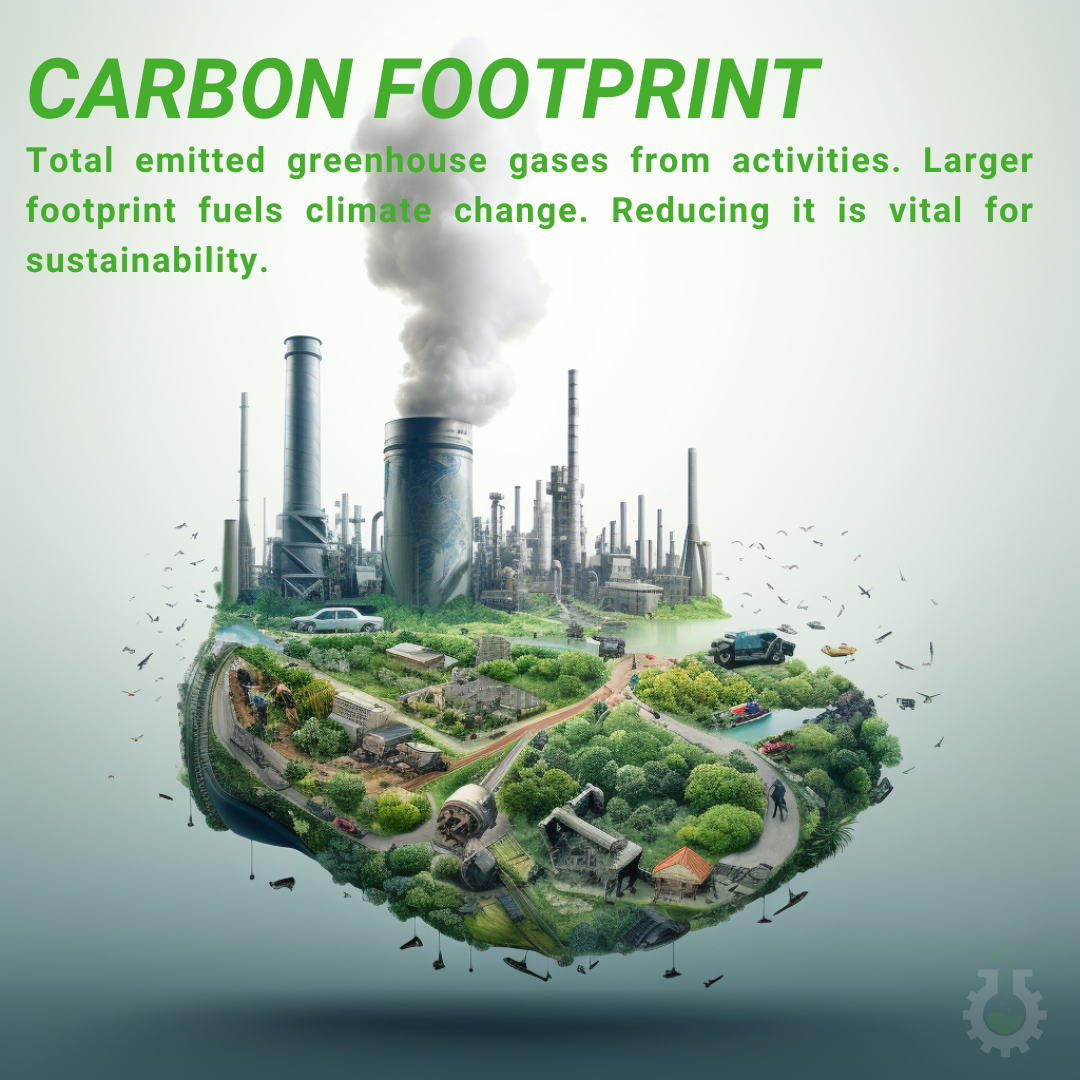August 24, 2023
Climate Change Poster Collection of the Day – Carbon footprint
Book a Demo
Today’s Climate Change Poster Collection focuses on carbon footprint. It is the total amount of greenhouse gases, with a particular emphasis on carbon dioxide, that are released into the atmosphere as a result of specific human activities. These activities primarily include the burning of fossil fuels for a variety of purposes such as electricity, heat, and transportation.
The magnitude of the carbon footprint serves as an indicator of the impact human activities have on the environment. This impact is quantified in terms of the amount of greenhouse gases produced, which are measured in units of carbon dioxide. Thus, a larger carbon footprint correlates to a greater environmental impact, particularly in terms of climate change.
Several factors influence the size of a carbon footprint. Two of the most significant factors include population size and economic output. Both factors tend to increase the footprint due to the higher consumption of goods, services, and energy. As populations grow and economies expand, the demand for these commodities rises, thereby leading to an increase in greenhouse gas emissions.
When we break down the contributors to carbon footprints, energy consumption and transportation emerge as the primary culprits. These sectors are predominantly fueled by fossil fuels such as coal, oil, and gas, which are notorious for their high levels of carbon dioxide emissions.
However, it’s important to note that the size of individual carbon footprints can vary widely. These variances are largely dependent on lifestyle choices, such as diet, energy use, and transportation habits. For example, a vegan who cycles to work and uses solar energy at home will have a smaller carbon footprint than a meat-eater who drives a gas-guzzling car and relies on coal-powered electricity.
Fortunately, there are several methods we can use to reduce our carbon footprints. These include carbon offsetting, technological developments, the use of renewable and low carbon energy sources, and energy conservation, among others.
To calculate a carbon footprint, it’s necessary to consider all sources of greenhouse gas emissions. This includes direct sources such as those from fossil fuel combustion in vehicles and power plants, as well as indirect sources like the manufacturing and transport of goods consumed.
The concept of the carbon footprint evolved from the ecological footprint. This earlier measure attempted to quantify the demand on Earth’s ecosystems by individuals, organizations, cities, regions, nations, or humanity as a whole. However, the carbon footprint narrows this focus to the specific impact of carbon dioxide and other greenhouse gases.
Understanding and reducing our carbon footprints is a crucial part of environmental stewardship. By altering our lifestyle choices and advocating for sustainable technologies, we can all play a part in mitigating the effects of climate change.
Discover an inspiring collection of climate change posters.



